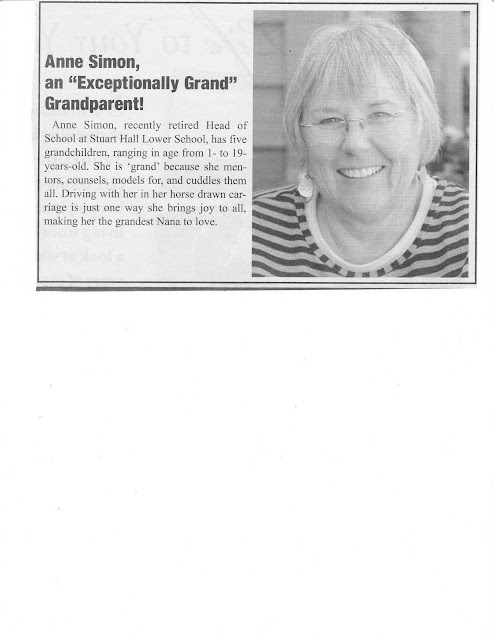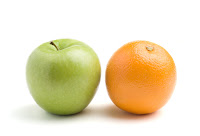Although Beyond The Brochure is a blog about Los Angeles private elementary schools (and I kind of assume that, if you’re reading this blog, it’s because private school is of interest to you), occasionally I feel the need to discuss the differences between LAUSD schools and private schools.
First off, I’m not anti-public school. On the contrary: I attended LAUSD schools from K-7, and my daughter attended public school at Third St. Elementary from 1-3rd grades. That’s why I think I can write this comparison with confidence and relatively little bias; I’ve experienced both.
Obviously, there’s a huge difference in how your child’s education is funded at a private school vs. a public one. At private school, the funder is you, pretty pure and simple. You pay the tuition (ranging anywhere from $12K to $30K annually, depending on the school), and then you pay again in terms of annual giving, plus fundraising offers galore. Even if you get financial aid, you’ll probably still be paying something.
In public school, our tax dollars pay for education. Just how much of our tax dollars trickles down to the actual schools, however, remains a mystery. LAUSD claims anything from around $3,600 to $10,000 per pupil, depending on the school (it’s too complicated to explain here; rest assured if you live in a low income area, even if your school is overcrowded, your school is probably receiving less money per kid than the schools in more affluent areas. It’s not fair). Some sources claim that, since LAUSD doesn’t count money raised by public school funding bond measures in these figures, that the actual funding is higher. Lord knows I’m no expert on this topic, but twenty minutes of researching it online made my head spin in confusion.
What is definitely true (and I know this from our three years at Third St. Elementary), is that you’ll be fundraising all the time, perhaps just as much as at a private school. The difference is that often the parents’ hands are tied in terms of how to allocate the funds; at a private school, you know exactly where the funding is going: straight back into the little school and thus to your child.
Perhaps it’s not fair to compare private schools, which are essentially medium-sized businesses, to public schools, which are vast bureaucracies with massive infrastructure. But it is an important, if somewhat obvious, distinction.
Bullying and Behavioral Issues
There are bullies and nasty girl terror everywhere. That is simply a given. And I’m not sure there’s much difference between public and private schools in how they deal with these entities. I’ve heard unbelievable horror stories circulating about texting harassment at private L.A. schools. Sometimes more money and entitlement absolutely leads to awful behavior. And it’s up to the school and its overall culture to deal with it.
On a personal note, my daughter had trouble on the playground at Third St. with mean girls and aggressive boys. She handled it fine, but she pretty much had to handle it on her own. Then again, it wasn’t anything extreme. But she’s experienced nothing like that at Mirman. The school seems to have a zero tolerance policy for that kind of nonsense.
If you’re concerned, ask the administration about things like honor codes and discipline. And if the school doesn’t have a real code of conduct, I would ask some current parents about their experiences regarding student behavior.
There are dedicated and wonderful teachers everywhere. Anna’s second grade teacher at Third St. was one of the best teachers she has ever had; he was an example of how years of experience (I believe he had 17 years) can add up to true excellence.
The difference in public and private school teachers doesn’t really come into play unless you’re talking about bad or ineffective teachers. In public school, teachers earn tenure after only a couple of years of teaching, and after that it’s almost impossible for LAUSD to rid itself of a bad teacher. The best you can do in public school, if your child gets a lousy teacher, is to transfer your child to a different classroom. Forget about getting the teacher fired. It isn’t going to happen.
Private schools, however, pretty much hire and fire at will. If a teacher isn’t cutting it, he or she won’t last long. Private schools don’t need to tolerate substandard teaching, or attitude problems, or laziness. On the other hand, private schools don’t have to hire terribly qualified teachers, either. Some twenty-something with a history M.A. and no teaching credential could end up teaching your child, and the results could be less than stellar. I got more than a couple of these types of teachers when I attended Crossroads for middle and upper school; Crossroads did get rid of the lousy newbies, but there was some chaos along the way.
Another comparison is the quality of teaching, but that’s hard to gauge. These days, LAUSD teachers are so bound by testing requirements that it’s difficult for them to fit in anything creative or different. It’s a system that doesn’t necessarily reward initiative, but does reward quantitative test results, so many teachers have to teach to the tests (this isn’t true of charter schools, which have different criteria for funding than regular LAUSD campuses).
On the other hand, teaching quality at private schools is more qualitative and far fuzzier. Sure, the kids do get tested every year at private school, but there wasn’t much attention paid to it. One could argue that a successful private school teacher is willing to compete in a popularity contest, whereas in public school popularity plays no part in job security.
Public school wins this one, hands down. Private schools, however they wish to sugar coat it, will never be as diverse as public schools. And I’m not just talking about ethnicity, I’m talking about class as well. If you send your child to private school, she will be with mostly upper middle class to outright rich kids. This does vary from school to school, as some private schools are truly enclaves for the rich and famous.
So there it is, some of the pluses and minuses regarding private and public schools. I’ve tried to be as fair to both sides as I can. At the same time, though, if I’ve inadvertently offended any of you, you might want to keep in mind that Beyond The Brochure is a blog about private schools. If you’re a huge public school- at-all -costs-and-in -all-circumstances-advocate (and all power to you), you might want to ask yourself: why are you reading this???!
Editor’s note: Among our readers we are pleased to include public school parents. Yes, we have public school moms who email us and say they read this blog for a few reasons: 1. They are considering transferring their child to private elementary school at some point in the future. 2. They want a glimpse into what life is really like at private schools.
A few months ago, Beyond The Brochure was mocked by another mom v-blogger (as Jenny says, if you can’t write, you video yourself) who called us “private schools snobs” and a bunch of other nasty names. We don’t think we’re snobs, and we try hard to be fair and inclusive on this blog, but if we have strong opinions, we write them. If we’ve struggled with a parenting issue at our school, we’ll talk about it. We answer every email and read (and welcome!) your comments. I have never attended a private school in my life! I matriculated through the LAUSD, SMUSD and UC systems from elementary school through graduate school. Oh, and last but not least, we aim for keeping our sense of humor present at all times. If that makes us snobs, so be it.
Jenny Heitz has worked as a staff writer for Coast Weekly in Carmel, freelanced in the South Bay, and then switched to advertising copywriting. Her daughter started 4th grade at Mirman School this year. She previously attended 3rd St. Elementary School. Jenny has been published recently in the Daily News and on Mamapedia, The Well Mom, Sane Moms, Hybrid Mom, The Culture Mom and A Child Grows In Brooklyn. She now writes about gift ideas and products on her blog, Find A Toad.
Like Beyond The Brochure on Facebook for the latest events, articles and photos! Facebook Page!




